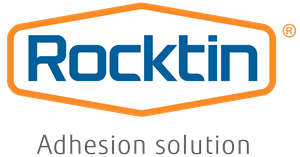What is Low-Pressure Molding [LPM]?
Have you ever heard about Low-pressure molding [LPM]? Or what is LPM used for? If you have, you are probably one of the few people who stay ahead of the curve. If you haven’t, then it is probably worthwhile spending 5 minutes reading this article. As you will be surprised how this revolutionary technology can boost your efficiency by a lot.
As its name suggests, the pressure is decreased in LPM in order to overmold delicate components, but the robustness and durability are sustained to provide full protection. It is a technology designed to main production efficiency. LPM has been around for a long time, since the 1970s. It’s been one of the most effective ways to create strain relief, seals, and encapsulation for components for the last half decade and yet, it somehow has not translated over to the bigger market and remains relatively unknown until more recently. For the past few years, this hidden gem is discovered by more and more companies in not just the electronics industry, but also the automobile, marine, heavy machinery, medical and lighting industries. If you are from one of these industries, then you have come to the right place.
Traditional Technologies VS Low-Pressure Molding
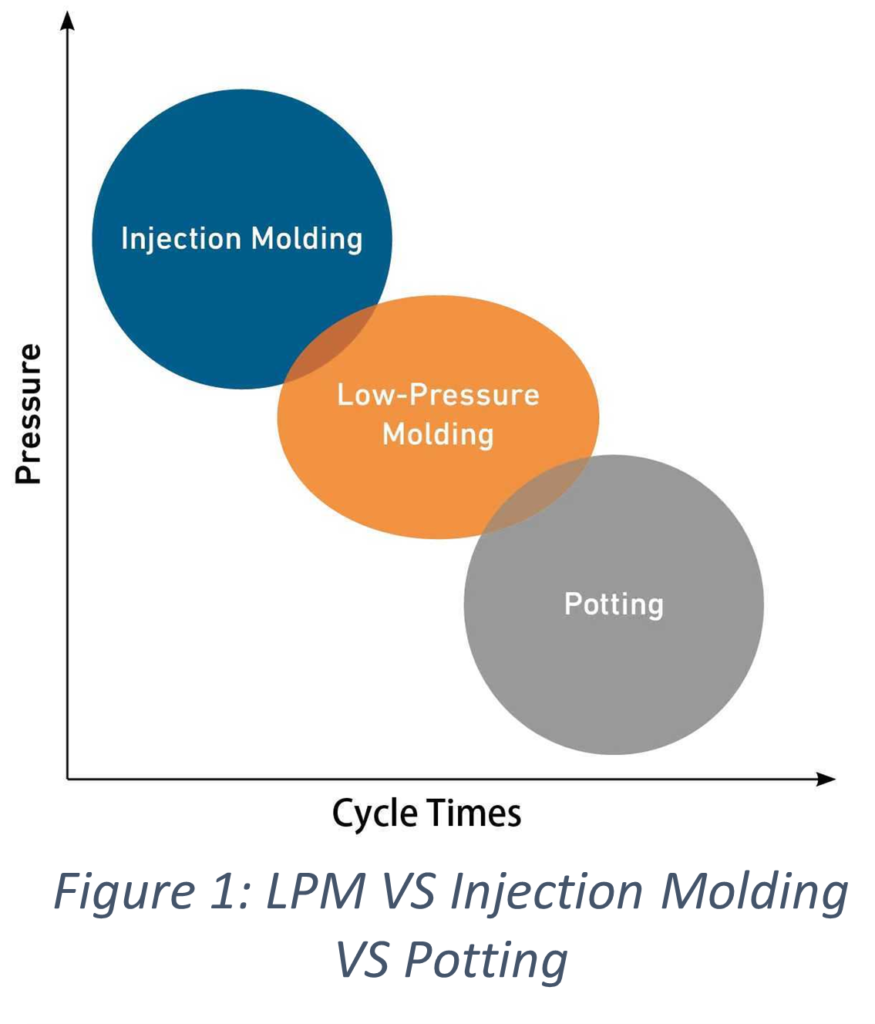
Traditional injection molding is a quick and efficient process that is sometimes used to create strain relief. However, it creates too much stress on electronic components to properly provide sealing or encapsulation. On the other hand, the traditional method to create seals and encapsulation by a potting compound can fully protect components, but requires a lengthy processing time along with a high level of wastage material.
LPM takes the best attributes of both processes and creates the most efficient and low-material usage way to fully protect your electronic assembly. To achieve this, the three main components that are used to create this innovative technology consists of material selection, mold design, and machine capabilities.
Material Selection
With any component protection, material selection is always the most critical as the durability of the component is reliant completely on this selection. LPM typically uses a hotmelt, thermal-set design rather than compound mixtures or natural curing. Using a hot melt design allows for a fast and reliable curing condition and the lack of chemical reactions sustains a stable process, which prevents wild temperature fluctuations you might see with potting compounds.
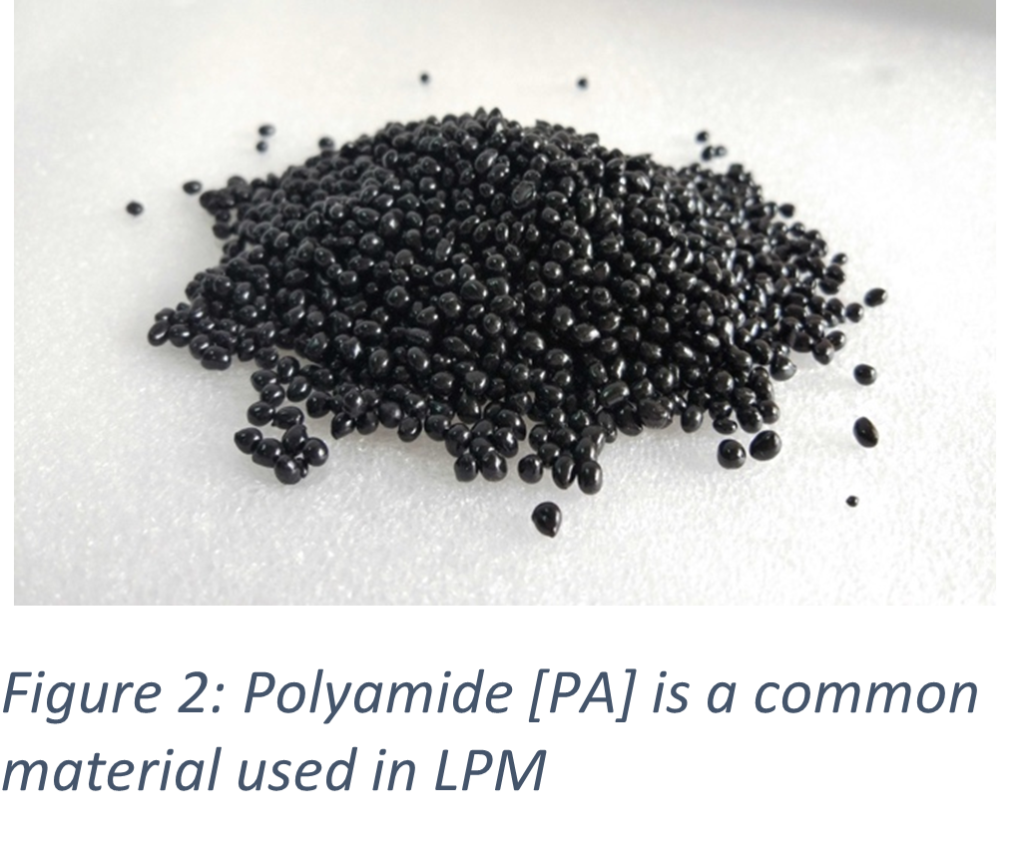 The three main materials that are commonly used in LPM are polyamide [PA], polyethylene [PE], and liquid silicone rubber [LSR]. The most common of the three is PA due to its wide selection range and ease of use. PA has a typical application temperature of approximately 190°C to 230°C (374°F to 446°F). Even though this might be considered high for some temperature-sensitive components, the material has stead and stable temperature cool-off as the material flows through the system and the mold. It has a medium level of hardness, so it is not quite as hard as fully cured epoxy but not quite as soft as silicone either, which allows for great impact/vibrational resistance and great flexibility. PA also has great electrical resistivity and has selections that can also provide chemical or UV resistance.
The three main materials that are commonly used in LPM are polyamide [PA], polyethylene [PE], and liquid silicone rubber [LSR]. The most common of the three is PA due to its wide selection range and ease of use. PA has a typical application temperature of approximately 190°C to 230°C (374°F to 446°F). Even though this might be considered high for some temperature-sensitive components, the material has stead and stable temperature cool-off as the material flows through the system and the mold. It has a medium level of hardness, so it is not quite as hard as fully cured epoxy but not quite as soft as silicone either, which allows for great impact/vibrational resistance and great flexibility. PA also has great electrical resistivity and has selections that can also provide chemical or UV resistance.
PE is similar to PA in most of its standard attributes. However, the main difference between the two is that PE usually has a higher application temperature ranging from 200°C to 300°C (392°F to 572°F). Even though the selection of PE is considerably smaller than PA, PE’s main advantages are its moisture, heat and chemical resistance properties. As they can endure harsh environments with high heat, humidity, and varying heat cycles, PE is widely used in automobile and heavy machinery components. PE also provides a much greater level of adhesion to the components. This is extremely useful for components that might see a lot of movement and risk of peeling. The combination provides a secure and protective seal that can protect components from the external environment.
Lastly, LSR may not fit in the hot melt category. But due to its mechanical properties, especially its nontoxic and non-irritant attributes in the medical industry, Rocktin Technologies have been able to create machines that can provide the same low-pressure injection using alternative curing methods.
The combination of these three materials provides a well-rounded selection of the majority of what you might need for your component’s protection. At Rocktin Technologies, we are constantly pushing our limit to develop novel material for LPM. Currently, we are testing a prototype material that has superior adhesive ability, this material provides IP67 waterproof rating. We also partner with Henkel and Toyobo to provide the best materials that you can find in the market.
Mold Design
The second important aspect to achieve an effective, successful LPM process is mold design. A proper mold design will allow for stable and consistent material flow to the component(s) as well as sustain efficient material use.
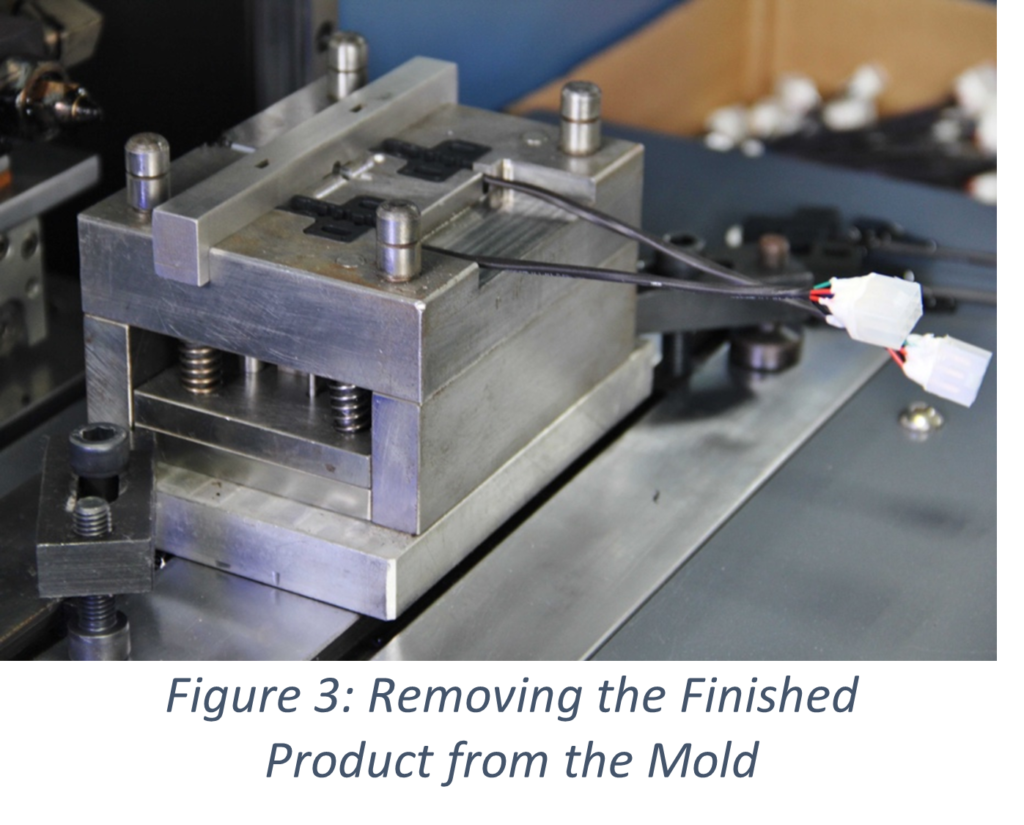 Comparing this back to the traditional way of potting around a component, LPM does not require housing and can be form-fitting. This can save up to 90% of your material usage. However, on the flip-side, some might try to over-save on material, and as a result, the mold design creates an inconsistent process leading to short-shots that leads to the component needing to be scrapped. This is why, being a well-versed and having many years of expertise experience in the field, Rocktin Technologies can provide a reliable and durable mold design that can ensure stability and efficiency in your manufacturing process.
Comparing this back to the traditional way of potting around a component, LPM does not require housing and can be form-fitting. This can save up to 90% of your material usage. However, on the flip-side, some might try to over-save on material, and as a result, the mold design creates an inconsistent process leading to short-shots that leads to the component needing to be scrapped. This is why, being a well-versed and having many years of expertise experience in the field, Rocktin Technologies can provide a reliable and durable mold design that can ensure stability and efficiency in your manufacturing process.
A low-cost alternative to the typical mold that Rocktin Technologies provides is the 3D-printed prototype molds. As the typical mold may be relatively expensive, even though there are limitations to the 3D-printed mold, it still allows you to understand the implementation of the material and undergo initial testing to see if this is the right material for you.
Machine Capabilities
Lastly, the key to tying all of these components together is the machine itself. To sustain a reliable, consistent production result, the intricate components must work in conjunction with each other. At Rocktin Technologies, our machines are designed with the utmost detail and reliability in order to meet your manufacturing needs.
 To start, a C-Frame machine is preferable as it allows for a more spacious workspace and the inclusion of a dual-mold workstation, which will increase output efficiency. The dual-mold workspace enables operators to handle components during the machine’s injection process, which will decrease the production cycle time. Another main advantage of a C-Frame structure is the low maintenance cost. Rocktin’s C-Frame machines has roll-on rod with pneumatic operations, which is reliable and has a longer service life. On the other hand, the traditional tie-bars machine has a compact structure, it is hard to replace individual parts inside the machine. Especially since the tie-bars machine has a linear bearing, the rubber material inside is prone to aging. Most of the time, the whole tie-bars machine needs to be sent back to the manufacturer for maintenance.
To start, a C-Frame machine is preferable as it allows for a more spacious workspace and the inclusion of a dual-mold workstation, which will increase output efficiency. The dual-mold workspace enables operators to handle components during the machine’s injection process, which will decrease the production cycle time. Another main advantage of a C-Frame structure is the low maintenance cost. Rocktin’s C-Frame machines has roll-on rod with pneumatic operations, which is reliable and has a longer service life. On the other hand, the traditional tie-bars machine has a compact structure, it is hard to replace individual parts inside the machine. Especially since the tie-bars machine has a linear bearing, the rubber material inside is prone to aging. Most of the time, the whole tie-bars machine needs to be sent back to the manufacturer for maintenance.
Other than the structure, a qualified machine should have a heating system that runs from the tank, hose, and all the way to the nozzle with ±1°C accuracy. Having this precise and fully heated system creates greater consistency in the material flow. This prevents potential short-shots in your production.
To prevent oxidation in the material, the machines should also allow for a sealed, nitrogen injection option in the melting tank. Oxidation in the hot melt will result in charring, which will cause inconsistency in the material as well as color degradation. This is especially critical for materials selected that have a level of transparency.
Every manufacturer knows the importance of having an automatic assembly line because of its efficiency and safety. So it is important to make sure the machine is fully automated and supports assembly line automation, this prevents any human errors and removes any safety risks for the operator. At Rocktin Technologies, not only do we manufacture machines for all sorts of LPM applications, but we also provide automatic assembly line design solutions.
Summary
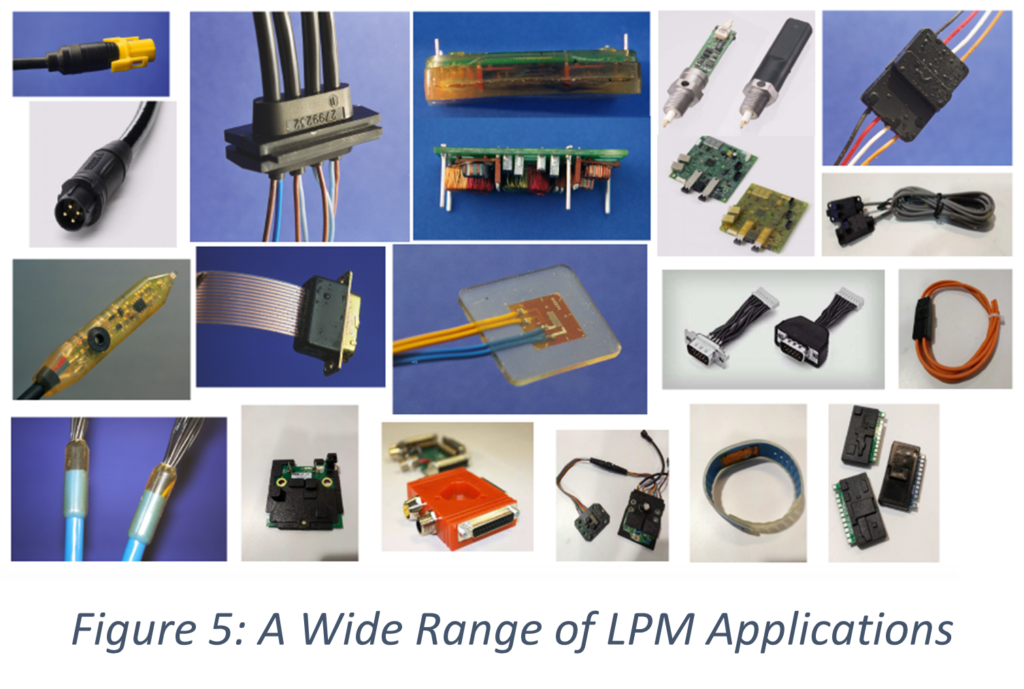
Overall, the success of your LPM solution is reliant on the material selection, mold design, and machine capabilities. The application of this technology ranges tremendously, from cable assemblies to PCBs, and wearable electronics to battery protection. This is why having a team most knowledgeable about the entire process is vital to the success of your products.
About Rocktin
At Rocktin Technologies, we have over 30 years of LPM experience as well as being one of the global leaders in this technology. We have a well-versed team that can take you through the process from initial consultation to OEM solutions. Whether you have questions about mold design, machine & material procurement, or you simply want us to design an automatic manufacturing line, please do not hesitate to contact us. Our expertise in LPM will be vital for the efficiency and success of your final manufacturing capabilities. It has been nice molding with you, until next time.
Rocktin Technology
Tel: (+1) 604-370-3801
Email: info@rocktincanada.ca

